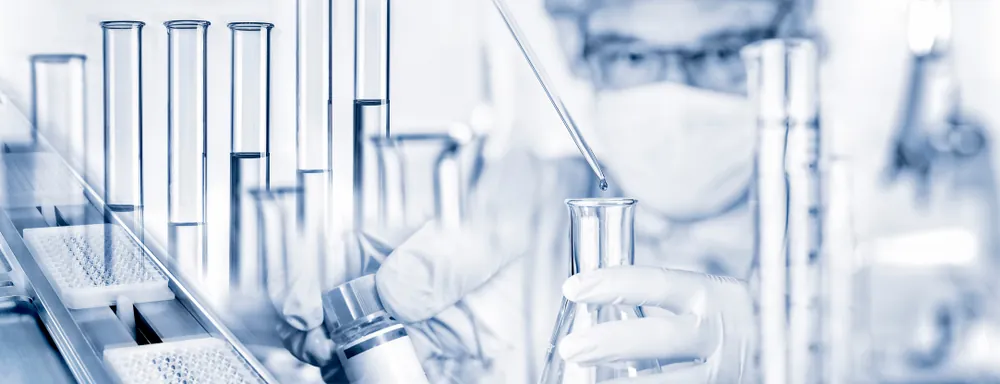Author: Keely So, Senior Manager Medical Devices / IVD, PharmaLex Australia
Regulation of Companion Diagnostics in Australia
Precision medicine is a rapidly growing area within the healthcare space and aims to tailor treatment options at an individual level. Instead of the one-size-fits-all approach traditionally taken, companion diagnostics have emerged as a powerful tool to support personalized treatment decisions.
Companion diagnostics have been in existence for over a decadei, however in Australia they were not regulated as a specific type of in-vitro diagnostic (IVD) medical device. Following extensive consultations in 2018, the Australian Therapeutic Goods Administrative (TGA) incorporated the definition of IVD companion diagnostic and regulatory requirements into legislation. These changes to the Therapeutic Goods (Medical Device) Regulations 2002 commenced on 1 February 2020ii, iii.
What is a companion diagnostic?
According to the 2020 changes to the regulation, an in-vitro companion diagnostic is an IVD medical device.
(a) that is intended by the manufacturer to be used for the examination of a specimen from the body of an individual:
(i) to identify whether the individual would be likely to benefit from the use of a particular medicine or biological; or
(ii) to identify whether the individual is likely to be at particular risk of a serious adverse reaction to the use of a particular medicine or biological; or
(iii) to monitor the individual’s response to the use of a particular medicine or biological; and
(b) that is mentioned in product information for the medicine or biological as being essential for the safe and effective use of the medicine or biological; and
(c) medicine or biological comprises blood, a blood component, cells, tissue or an organ, from a donor other than the individual—that is not intended by the manufacturer to be used for the examination of the specimen merely to determine whether the medicine or biological is compatible with the individual3.
Compared to an IVD medical device, the defining characteristic of a companion diagnostic is that it provides essential information for the safe and effective use of the corresponding medicinal or biological product. For these reasons, other in-vitro diagnostics such as diagnostic tests, drug monitoring tests or complementary diagnostic tests are not considered companion diagnostics.
How are companion diagnostics regulated in Australia?
Effective 1 February 2020, all companion diagnostics are regulated as Class 3 IVDs and require inclusion on the Australian Register of Therapeutic Goods (ARTG) before commercial supply in Australia. All companion diagnostic applications must be supported by appropriate conformity assessment evidence. Overseas evidence from regulators such as the US Food and Drug Administration (FDA), Health Canada, and European CE certificates may also be leveraged.
Depending on the type of conformity assessment evidence available, sponsors may be subject to a mandatory application audit by the TGA. If the manufacturer has a TGA Conformity Assessment Certificate or certification to the European In-vitro Diagnostics Regulation (IVDR), the application is exempt from mandatory audit. However, sponsors should be aware that the TGA may still select the application for a non-mandatory audit at their discretion.
For most medical devices and IVDs, ARTGs are issued based on what the regulation refers to as the ‘kind of medical device’ concept. However, ARTG applications for companion diagnostics are Unique Product Identifier (UPI) based. Sponsors are therefore required to submit individual applications for each companion diagnostic and ARTG inclusion will be for the specified companion diagnostic only.
Due to the relative infancy of these changes, certain companion diagnostics may be eligible for transitional arrangements.
Transitional Arrangement
Sponsors of companion diagnostics that are eligible for transitional arrangements must submit a new ARTG application by 26 May 2026 to enable continued supply. Eligible devices are those that on 31 January 2020:
- Were already included on the ARTG or had an ongoing application for inclusion
- Were not included in the ARTG but were within scope of a valid TGA conformity assessment certificate
- Were not included in the ARTG but were the subject of an ongoing application for a TGA conformity assessment certificate.
Companion diagnostics that are not covered by transitional arrangements must comply with the new requirements effective 1 February 2020.
About in-house companion diagnostics
Companion diagnostics can be developed by IVD manufacturers for commercial supply. However, these products can also be developed by laboratories for use in-house (i.e., within their facility or laboratory network). These are known as in-house companion diagnostics and are also regulated as Class 3 IVDs, though ARTG inclusion is not required.
Instead, the conformity assessment procedure consists of a laboratory accreditation and device evaluation process conducted by the National Association of Testing Authorities (NATA) against the National Pathology Accreditation Advisory Council (NPAAC) standard for in-house IVDsiv.
The regulation of in-house IVDs (including in-house companion diagnostics) differs from companion diagnostics developed by commercial manufacturers.
Conclusion
All companion diagnostics seeking ARTG inclusion must comply with the new regulatory requirements from 1 February 2020 (unless transitional arrangements apply). As Class 3 IVD medical devices, companion diagnostics can be subject to mandatory audit and attract a higher level of regulatory scrutiny.
Notes
i Jørgensen JT, Hersom M. Companion diagnostics-a tool to improve pharmacotherapy. Ann Transl Med. 2016 Dec;4(24):482. doi: 10.21037/atm.2016.12.26. PMID: 28149844; PMCID: PMC5233535.
ii Therapeutic Goods (Medical Devices) Regulations 2002. https://www.legislation.gov.au/Details/F2023C00565
iii Overview of medical devices and IVD regulation, TGA Oct 2020. https://www.tga.gov.au/overview-medical-devices-and-ivd-regulation
iv Accreditation Matters 2024, https://nata.com.au/








